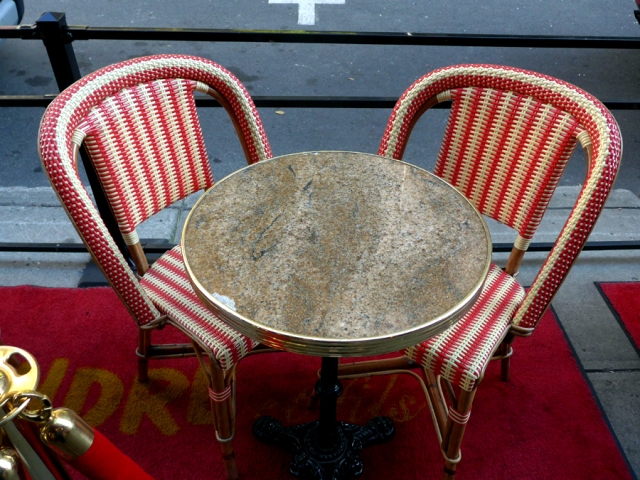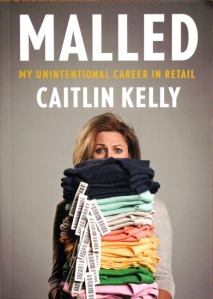By Caitlin Kelly

This essay, from LitHub, is brilliant and spot-on:
The writerly apartment in this fantasy is bare and minimal; the walls are unpainted plaster, or the wallpaper is peeling; the heat is faulty or not there; there are books stacked on the floor. It looks this way because it’s Paris struggling out of the deprivation and destruction of a world war, or New York soldiering on through the Depression, living in the wreckage of 1920s glamor. The writer spends hours in cafes, working and drinking, because the cafes are heated and the apartment is not. The aesthetic of this fantasy is permanently frozen in the first half of the 20th century, in the cities (and occasionally the beach resorts near cities) of Europe and the United States. The reason the fantasy writer lifestyle is set in such a particular time and place is that the interwar and postwar American writers who went to Europe for cheap rents have exerted a massive influence on the American idea of what literature is. Who casts a longer shadow across American fiction and curricula than Hemingway, Fitzgerald, and Baldwin?
While considering the specificity of these images, recently, something came to me: It’s an Anthropologie catalog.
(For those unfamiliar with it, Anthro is a major American retailer, with stores that change their look every few weeks and who sell a costly-but-gauzy kind of clothing and accessories to women who typically work in a corporate environment.)
Everyone wants to be a writer!
Or make films or art or music because…freedom from typical work constraints is so deeply appealing.
The catch?

Life costs money.
I grew up in a household of creatives, and we did live in a house my father owned, and drove decent used cars. Some years were better than others financially, but we also lived in Toronto, where the CBC and NFB had appetites and budgets for my father’s work as a film diector, long before there were dozens of cable channels seeking content.
Living in Canada also meant we never paid a penny for healthcare — which has cost me and my husband, living in New York as self-employed workers, $1,700 a month for the past two years.
Yes, really.
Thanks to a new plan, I’ll “only” pay $700 a month starting today, saving us $700 a month.
But our monthly “nut” is still more than $5,000 and we have no children.
Living a life creating things is one many people dream of. But it still has to be supported by someone, usually multiple someones, actually paying for food, fuel, medication and housing — let alone haircuts, dental work, new eyeglasses, etc.
The solo creative life is affordable only to those who can stand to live frugally, and for long periods, because so little creative work actually pays well enough to live a life that allows for sick days, a vacation, owning a home.
As one childhood friend, who, as a single mother helped to create animated films you might have watched, told me recently: “I lived on air.”
I know artists and illustrators and film-makers and writers and playwrights and poets. They love their creative work but rarely enjoy the payment and insecurity that comes with it.
So, to pursue this life often also means having a side hustle, a day job, a trust fund, a hard-working, well-paid spouse or partner.
It’s extremely rare for me to have a month in which I’ve generated no income from my writing, because I don’t have a side job. It is my job! That means, without my husband’s hard work at his two freelance positions, (and our emergency savings), we’d be in deep shit, unable to pay our bills in full and on time.
It shames me to admit that this is the case for me right now — but the reason I do so here is because it’s true.
This can be a financially precarious life, and often is.
Here’s a post I wrote in 2011 about this dilemma — would you rather be creative or (the great American fetish) productive?
Whenever I’ve taught or lectured on journalism, I crush a few young dreams when I make clear that traditional news journalism more resembles an industrial assembly line than an artist’s studio.
Editors aren’t terribly interested in whether you’re feeling creative — they want accurate copy/content/visuals and they want it now!
The worst of its managers rely on the crude tool of by-line counts, i.e. how many stories have made it into the paper with your name on it (your byline.) So re-writing press releases or dumping puff pieces all add up to more bylines, if total garbage. So you’re visibly and undeniably producing and are therefore (whew! job saved!) productive.
Now….how to be creative?
What does that look like to you?
It might mean inventing a recipe, choosing a new color for your living room, or starting a poem or sketching your cat or simply staring into the sky for an hour to let your weary brain lie fallow, like an overworked farmer’s field that needs time to re-generate.



